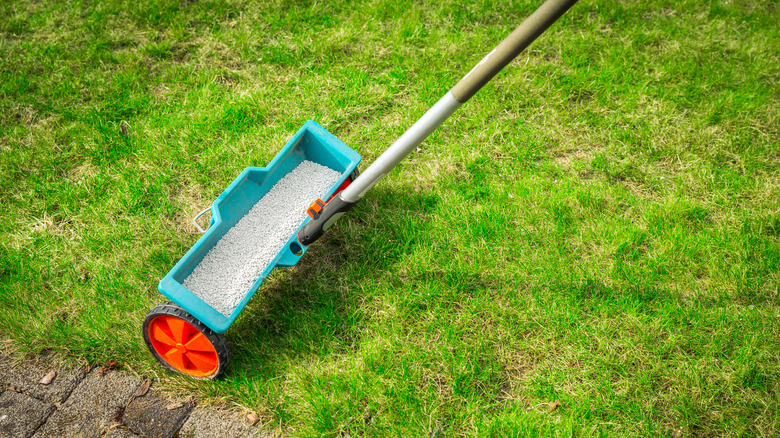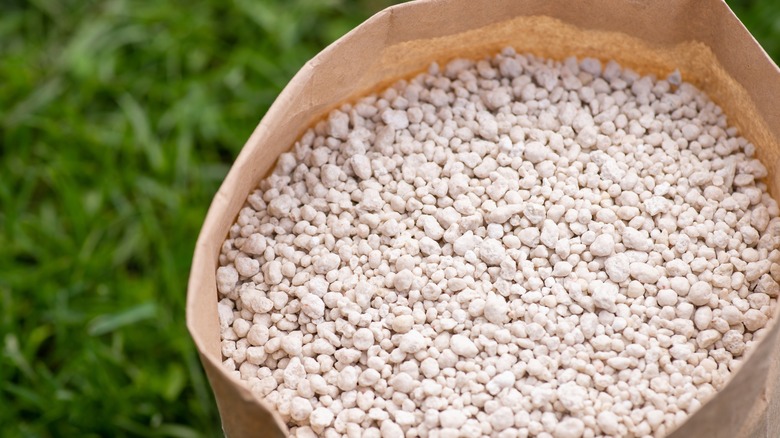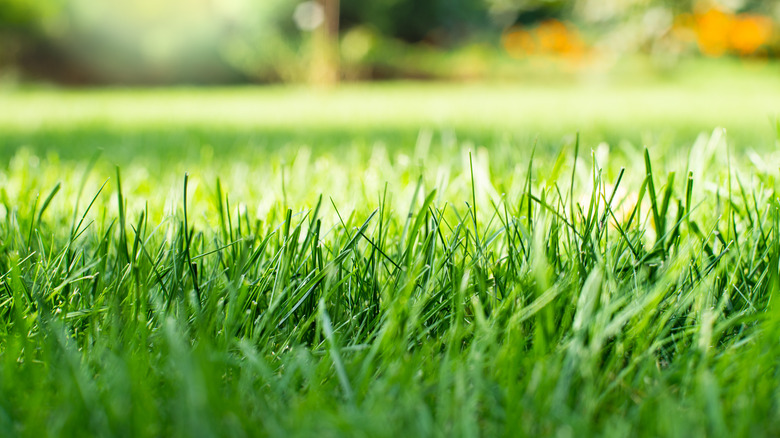Our Lawn Care Expert's Advice For Choosing The Best Time To Fertilize Your Lawn
Keeping your lawn green and healthy is a great way to improve the overall look of your home and outdoor space, but you might not be sure when to give your grass the fertilizer it needs. Rob Palmer, Founder and Brand President of Lawn Squad, a lawn care provider, spoke exclusively with House Digest about the best time to fertilize your yard.
According to Palmer, it really depends on your location and climate there. "In the cool season zone and transition zone, the lawns require fertilization [from] spring through late fall, but the very best time to provide nutrition is late fall [or] early winter," he said. "In the warm season zone, the best time to fertilize is during summer months when the grass is actively growing." While you will likely need to fertilize your lawn more than once every year, making sure to do so at these recommended times will provide your grass with nutrition when it needs it the most.
Why you should fertilize your lawn at these times
While it may seem like the start of spring is the right time to fertilize your grass, Rob Palmer told House Digest why it's imperative to give your lawn fertilizer during late fall if you live in a cooler climate or in the summer if you live in a warmer area. In places with harsh winters, the cold, ice, and snow can be hard on your plants. Giving grass food in spring can help growth and fertilizing before winter sets in can help the plant prepare. "Fertilizer applied during this time is converted at a much higher rate and stored as carbohydrates in the root system, providing the grass with the necessary energy to thrive and recover after the winter stress," he said.
This is a great system for yards that go through frigid winters, but in places with warmer winters, it's best to give your grass food when it's working hard to grow. Palmer explained that fertilizing in the summer will help "provide the nutrients to support active growth." In areas where temperatures stay between 80 and 95 degrees Fahrenheit throughout the summer, warm season grasses will be continuously growing, which is why this is the best time to give your grass some food. "Fertilizing at proper rates during these growing temperatures allows the grass to utilize the nutrients from fertilizer, along with the carbohydrates produced during photosynthesis, to produce new root, shoot, and stem growth," Palmer said.
How many fertilizer applications your grass will need
When Rob Palmer spoke with House Digest, he discussed the different types of grass in different areas and how many times you should fertilize your lawn. People who live in transient or cool zones likely have perennial ryegrass, bluegrass, or fescue grass. These types of lawns will typically need to be fertilized four to seven times from spring to fall to ensure the grass is healthy, according to Palmer. He suggests applying fertilizer every 35 to 42 days because "this helps to provide consistent nutrients to the lawn without creating a lot of peaks or slowdowns in turf growth."
For those in warmer climates, zoysia, centipede turfs, and St. Augustine grasses will require two to four applications of fertilizer every year in the summer. Palmer added that some lawns in warmer areas could consist of Bermuda grass and that this type needs to be fertilized three to five times per year. These types of grass will typically need fertilizer applications with slow-release nitrogen every 45 to 60 days. While it may seem strange that these grasses require less fertilizer, Palmer explained that giving warm grasses too much food could be problematic. "Although true for any grass, excess fertilization on warm season grass species can quickly create conditions where the turf grows too rapidly, producing excess organic matter buildup and requiring the need to mow and maintain the lawn more regularly than typically is desired in a home lawn setting," he said.


